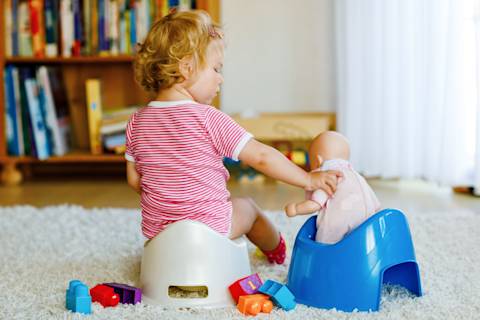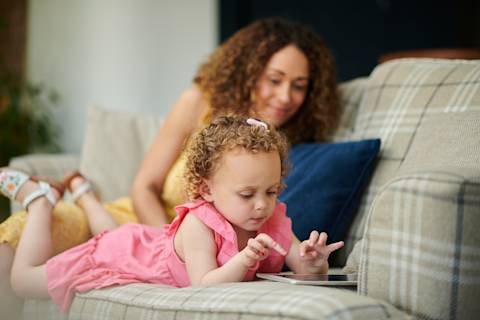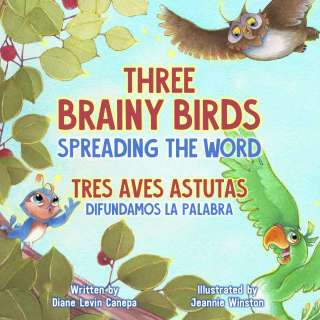Kids ages three to five years old may have developed strong language skills and experienced many things, but they are still learning about how to manage their behavior and emotions. By being exposed to more environments (like daycare or preschool) and people (like teachers and new friends), your child is learning how to act and respond in different situations.

Toddlers may be known for their behavior and big emotions – but so are preschoolers! Between the ages of three and five years old, your child is still learning how to navigate the world – a world now filled with more new places and people. Parents, teachers, and caregivers can make a big difference in a child’s behavior and emotions through their responses and interactions. Consistency is key! Talk to your child’s caregivers and teachers about what approaches are best for all of you to use together when helping your child. Having the same expectations and responses across all adults in your child’s life is important.
Find the good. Immediately praise or reinforce your child when they do something well or right – high fives, positive words, and affection are all great ways to show your child that what they did was great. Have them praise themselves too with positive self-talk like, “I did it!” or “I’m proud of myself!
Set clear expectations. Let your child know what is expected. Use the phrase “First...then…” to simplify exactly what your child needs to do. For example, if your child is wanting to go on a play date with a friend right away, you can say, “First, we’ll eat lunch at home, and then we’ll go and meet your friend at the park.
Help them with their words. Preschoolers with budding vocabularies still need a little help in finding the right words to explain what they want or feel. You can help by giving your child a “script” of what to say in specific situations. For example, if your child grabbed a toy from another preschooler on the playground, get down to your child at eye level and explain, “I can see you’re upset. You can say, “I would like a turn with that toy.’” You can practice this right in the moment and also talk about it when discussing other situations.
Teach routines. Routines help preschoolers (and you!) get through the expected parts of the day with less fuss.
Give time. Often parents want their preschooler to act or respond right away, but preschoolers still need time to hear and do what is being asked of them. Try to give your child only one or two directions at a time, and then count to ten in your head before repeating the direction.
If you definitely want the child to use a quieter voice though, don't make it a question. Say "Please use a softer/quieter/inside voice." If you ask them if they can, they may say "no" or that they don't want to. You can also give them the choice to use their loud voices somewhere else. "It sounds like you are enjoying being loud. Let's go see how loud we can be outside!"—Suzie PettitParentStay calm. Keep your voice steady. If you get upset, your preschooler is more likely to get upset. Your preschooler will match your tone and emotion level.
Maintain eye contact. Look at your preschooler when you give instructions or model behaviors.
Give your child things to do. Assigning “jobs” or choices can motivate your preschooler to do what you want them to do without questioning it. When offering choices, two or three are usually plenty for this age group.
Make things fun. Preschoolers love to play. If you turn tasks into games, your preschooler is more likely to join in the fun. Instead of “Put on your shoes!” ask your preschooler, “How fast can you put on your shoes today? Let’s count how long it takes!
Time-Ins. Time-outs are not always effective at helping kids. Instead, try a “time in,” where your preschooler takes time to calm down and re-focus on what his body is doing. For example, if your child is throwing blocks and screaming, instead of making your child take a time-out in another room, you can ask your child to put the blocks down and step away for a few minutes. While he is away from the blocks, he can take a “time in” to calm his body down (deep breaths, drink of water, etc.) and talk about how he should be playing with the blocks. At first, you’ll need to teach this strategy – but chances are, your preschooler will soon learn to do it on his own.
During especially hard times, like a national emergency, crisis, or during a pandemic, find more tips on managing stress and parenting here.

Establishing Routines - Eng
Establecer Rutinas - Esp






